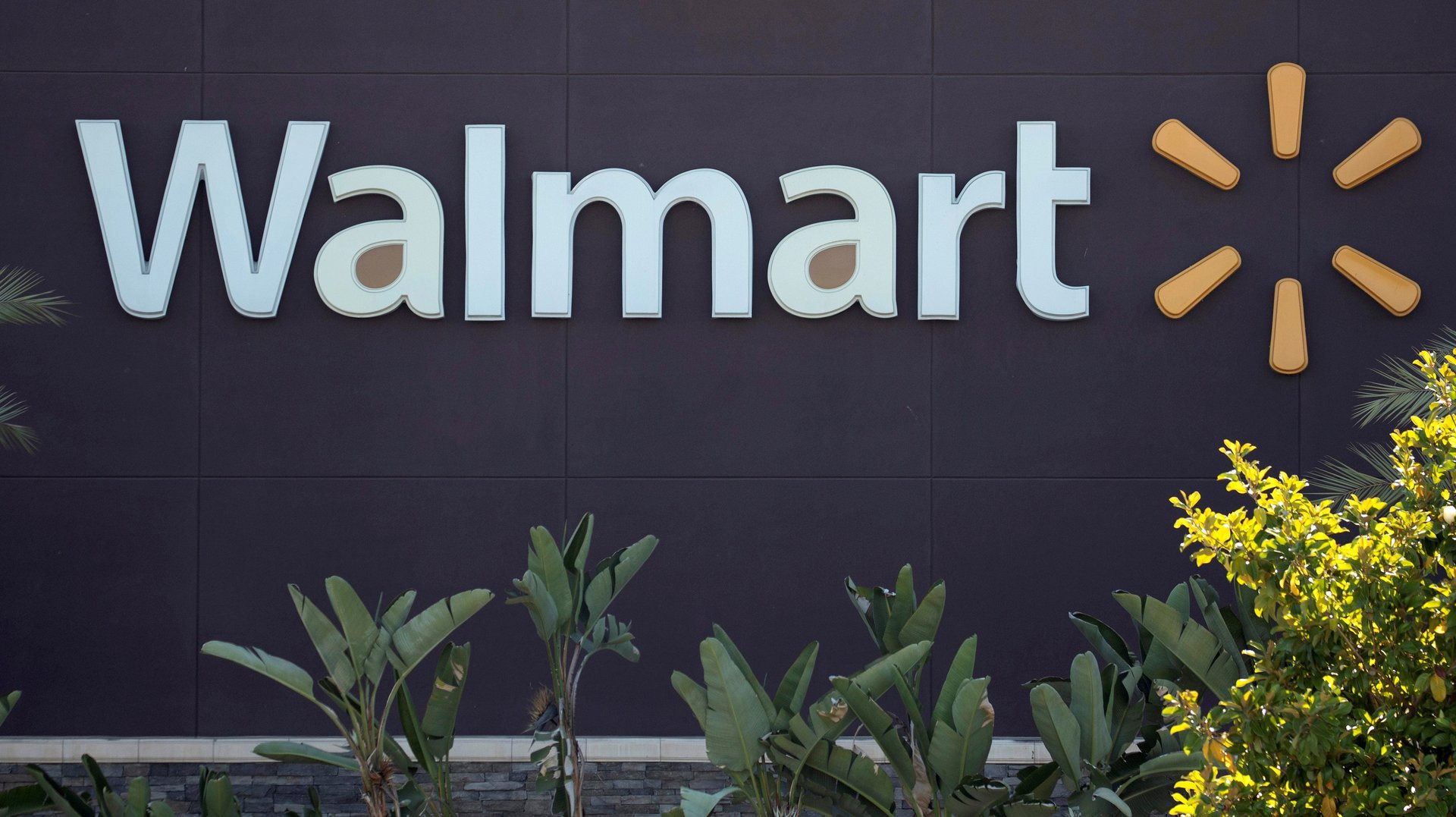For Quartz members—The way we Walmart now
Hi [%first_name | Quartz member%],


Hi [%first_name | Quartz member%],
Walmart’s nearly 5,000 US stores might seem like a drag on its business during the pandemic, but that huge network—plus a designation as “essential”—has been driving an increase in sales. In the second quarter, Walmart’s profits hit $6.5 billion, compared with $3.6 billion a year earlier. Today we’re looking at America’s biggest retailer, and what’s next for Walmart shoppers.
But first, a recap: The TikTok sale saga continues, IPOs are popping like it’s 1999, and Macy’s wants out of malls. Beijing is mad at Thomas Piketty and Jeff Bezos is losing the $700 billion battle for India’s shoppers. But worry not: Amazon is so good at positive vibes that it can detect them in your voice.
Your most-read story this week: Welcome to Leeside, a fantastic Quartz special project for which we actually developed time-travel technology. And most relatable member goes to whoever was reading Here is the probability you will break up with your partner. We get it; rona relationships are tough.
Okay, put on your face mask and roll back those prices. We’re headed to Walmart.
Watch out, Amazon
After months of anticipation, Walmart this week announced the details of Walmart+, a subscription service that provides members free shipping on a range of items, discounts on fuel, and other perks for $98 a year. When it launches on Sept. 15, Walmart+ will stand as a direct competitor to Amazon Prime.
The program, which is an expansion of one Walmart began testing last year for free grocery delivery, is another signal of the retailer’s growing e-commerce ambitions. Since introducing online shopping in 2000, the company hasn’t always prioritized digital sales. But after buying up e-commerce company Jet.com in 2016, it has made a number of costly and sometimes controversial investments into e-commerce as it seeks to become a true omnichannel giant.
One indication of the scope of those ambitions came recently, when Walmart surprised everyone by teaming up with Microsoft to bid on social-media platform TikTok. The move seemed mystifying, but Walmart said owning the short-video app could drive e-commerce sales by broadening its third-party marketplace—though it may be more effective at boosting the company’s growing advertising business.
The pandemic has only strengthened Walmart’s resolve on e-commerce. Its online sales of groceries and other items have surged, while its vast network of physical locations lets shoppers order digitally and pick up curbside. Though some analysts were underwhelmed by Walmart+, which still requires a $35 minimum order for free delivery—and not all items on Walmart’s site are eligible—others think its benefits are enough to help Walmart’s e-commerce presence grow even bigger.
A history of e-commerce efforts
2000: Walmart launches walmart.com and samsclub.com.
2007: The company introduces Site to Store, which lets shoppers buy products online and pick them up in stores.
2011: Walmart buys social-media company Kosmix for a reported $300 million and says its team will work as part of a new group called @WalmartLabs, focused on social and mobile shopping.
2015: For the fiscal year ended Jan. 31, the company reports about $3.3 billion in capital spending on “Information systems, distribution, digital retail and other,” less than the $4.1 billion it spent on new stores and expansions.
2016: Walmart buys e-commerce company Jet.com for $3.3 billion and appoints the founder and CEO its head of e-commerce. It also partners in China with e-commerce company JD.com.
2017: The company launches Store No 8, an incubator for startups using technology to reshape retail. It also buys online footwear retailer Shoes.com, online clothing retailers Bonobos and ModCloth, and outdoor retailer Moosejaw.
2018: Walmart acquires Indian e-commerce company Flipkart for $16 billion, and scoops up more small online retailers including Art.com and fashion site Eloquii.
2019: The company’s e-commerce sales continue to grow, but reports emerge that Walmart is racking up substantial losses on the division. It buys technology company Aspectiva, but sells ModCloth.
2020: With a substantial and growing e-commerce business of its own, Walmart shutters Jet.com. For the fiscal year ended Jan. 31, it reports $5.6 billion in capital spending on “eCommerce, technology, supply chain and other,” versus just $77 million spent on new stores and expansions.
More in store

Important as e-commerce is to Walmart, the company still does most of its sales in its truly vast network of physical stores. Globally, it has nearly 11,500 locations. In the US alone, it operates roughly 4,700 Walmart stores as well as some 600 Sam’s Club stores. Those spaces are also part of Walmart’s success online. The company uses them to fulfill e-commerce orders, and during the pandemic, shoppers have shown a preference for being able to buy items online and pick them up at their local store—something Amazon can’t offer. In its latest annual report, Walmart said it now has more than 6,100 locations worldwide that offer delivery or pick up.
…TikTok? Really?
Walmart’s co-bid for TikTok was a surprise, to say the least. The app is known for short videos of goofy stuff like teens dancing. What would the world’s biggest retailer want with that?
😁 Pros
- TikTok could expand Walmart’s third-party marketplace. In theory, Walmart could integrate features for in-app shopping and let its third-party vendors easily set up stores in the app, making Walmart’s e-commerce business bigger and more profitable.
- The app could be a new stream of advertising revenue. Walmart has been trying to build up its own advertising business of late. TikTok would give it a powerful platform that brands are already paying to advertise on.
- It would give Walmart a media division. International mega-retailers such as Alibaba and Amazon are building media divisions to create profitable businesses that go beyond just selling physical goods. Walmart doesn’t currently have an equivalent, but TikTok could give it a good start.
- Walmart would gain valuable insight into social media. More valuable than the Jet.com property Walmart acquired in 2016 was what it learned about e-commerce and the talent it gained in the deal. TikTok could offer similar benefits, and Walmart is in a position to invest in preparing for a future that will likely blend social media and commerce.
😬 Cons
- Social commerce isn’t mainstream yet in the US. In its rationale for bidding on TikTok, Walmart pointed to the success the app achieved with e-commerce in “other markets,” almost certainly meaning China. But while social commerce is already popular in China, it’s still in its infancy in the US and advancing slowly.
- It won’t be easy to build a large ad business, even with TikTok. Google and Facebook dominate the digital ad market, and Amazon is just starting to make inroads. There’s no guarantee Walmart will attract enough ad dollars to have a meaningful impact.
- TikTok could be a flash in the pan. Teenagers are the app’s core demographic and they tend to be fickle. TikTok is doing great now, but it’s uncertain whether that momentum will last for years to come.
- Walmart isn’t great at expanding into new territory. The company has previously tried to get into media, buying streaming company Vudu in 2010 for instance. It bought social-media company Kosmix the next year. But it never succeeded in video streaming like Amazon has and it’s unclear what results the Kosmix acquisition yielded.
Keep reading
- Walmart is spending $3.3 million a day on cleaning and PPE
- The month the entire world signed up for delivery
- Walmart is selling used clothes in an attempt to become a fashion retailer
- Who’s winning the battle for India’s $700 billion retail industry?
- Walmart—yes, Walmart—is making changes that could help solve America’s wealth inequality problem
Thanks for reading! And best wishes for a valuable end to your week,
Kira Bindrim